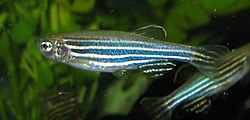Until the laws get changed, shooing
seagulls away from a picnic table, hazing
Canadian geese in town parks and even
trapping mice in a home could be considered violations of town ordinances, according to Representative Town Meeting members scheduled to vote on the legal changes at this week's meeting. The RTM, which is scheduled to meet tomorrow at
Central Middle School, is being asked to change municipal ordinances that say "
no person shall molest, harm, frighten or harass any animal, reptile or bird" and "
no person shall give or offer or attempt to give any animal, reptile or bird any poison or any other known noxious substance."
"
The reason it's being changed is the town recognizes it was violating its own ordinances," said
Franklin Bloomer, a retired lawyer who chairs the RTM's
Land Use Committee, which has asked for further revisions to the ordinances. In 2005, the town began a program to deter the dozens of nonmigratory
geese from inhabiting
Bruce and
Binney parks and leaving their droppings everywhere. At first about 20 geese were captured and eventually gassed and donated as meat to a food bank. Then the town initiated a nonlethal program, which is still going on, to use dogs to scare the geese and volunteers to "
oil" goose eggs to prevent the geese from nesting.
All of these activities were permitted under federal and state laws allowing officials to manage wildlife. But after learning of the town ordinances, Conservation Director
Denise Savageau asked the RTM to change the laws to allow those activities to be allowed as part of "
wildlife management." But RTM members who reviewed the ordinances are recommending additional changes be made after realizing the laws prohibit many other everyday activities, such as shooing seagulls from a picnic table at the beach. "
The main thing they wanted to do was to make legal what they are doing," Bloomer said of conservation officials. "
They didn't stop to think that the other stuff was illegal."
For instance, although the statutes are in a section that deals specifically with town parks, the ordinances could be construed to apply to activities on private property, such as trapping and killing rodents in a home, Bloomer said. "
The way it reads, there are no geographic limitations to that section," he said. RTM members also are recommending that the word "
maliciously" be added to the section. "
If you shoo away a squirrel or a seagull while you are having a picnic, well that is OK," Bloomer said.
They also are proposing to change a section that prohibits someone from carrying a firearm on town property, allowing a person to carry a gun or rifle as long as it is while in transit, Bloomer said. For instance, that would allow a duck hunter who has a permit to carry a firearm to bring it onto a boat docked at town-owned
Grass Island and go hunting offshore in
Long Island Sound, Bloomer said. "
We tried to fix some of the most important stuff," he said.
The land use committee's amendments have won the support of the
Health and Human Services Committee, which held a discussion Tuesday night, said committee chairman
Gerald Isaacson, a District 5/Riverside representative. "
A lot of it was trying to understand what these amendments would do to strengthen it and the general feeling was they would be very helpful," he said.





